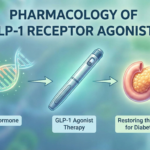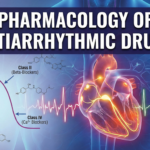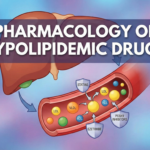Antimicrobial chemotherapy has transformed modern medicine, providing effective treatments for a wide array of infectious diseases. Its rational application relies on core scientific and clinical principles to optimize use, minimize harm, and combat resistance.
Introduction
Antimicrobial agents target bacteria, fungi, viruses, and parasites. Their selection and use are guided by principles aiming at maximal efficacy, minimal harm, and preservation of future utility.
History and Evolution of Antimicrobial Agents
The journey began with the discovery of penicillin by Alexander Fleming in 1928. Since then, numerous antimicrobial agents have been developed, each with its own unique properties and mechanisms of action.
1. Selective Toxicity
The cornerstone of antimicrobial therapy—the agent must target specific microbial structures or metabolic processes absent (or significantly distinct) in human cells, such as bacterial cell walls, ribosomes, or enzymes.
- Example: Beta-lactams inhibit peptidoglycan synthesis (absent in humans).
- Clinical relevance: Ensures efficacy and safety; supports dosing based on pathogen sensitivity and host tolerability.
2. Spectrum of Activity
Antimicrobials are classified by their spectrum:
- Narrow-spectrum: Active against a limited range (e.g., Penicillin G for streptococci)
- Broad-spectrum: Cover diverse organisms (e.g., tetracyclines, fluoroquinolones)
- Extended-spectrum: Modified older drugs active against resistant pathogens (e.g., third-generation cephalosporins)
- Clinical relevance: Tailor choice to the pathogen, preserve normal flora, minimize resistance.
3. Bactericidal vs. Bacteriostatic Action
- Bactericidal: Kill microbes (e.g., beta-lactams, quinolones)
- Bacteriostatic: Inhibit growth (e.g., tetracyclines, macrolides)
- Relevance: Immunocompromised or severe/life-threatening infections may favor bactericidal drugs; combining bacteriostatic and bactericidal agents may sometimes be antagonistic.
4. Resistance Mechanisms
Microorganisms develop resistance due to mutations or horizontal gene transfer.
- Natural resistance: Intrinsic to species
- Acquired resistance: Via target modification, drug inactivation, efflux pumps
- Clinical impact: Drives stewardship; necessitates susceptibility testing and prudent prescribing.
5. Synergy and Antagonism
- Synergy: Combined effect > sum of effects; e.g., aminoglycoside plus beta-lactam for enterococcal endocarditis
- Antagonism: One drug reduces another’s activity; e.g., bacteriostatic plus bactericidal may hinder killing
- Clinical relevance: Guide combination therapy for severe infections or resistance prevention.
6. Pharmacokinetics and Pharmacodynamics (PK/PD)
- Pharmacokinetics: Absorption, distribution, metabolism, excretion determine dosing and tissue penetration.
- Pharmacodynamics: Relationship between drug concentration and effect.
- Clinical relevance: Dose and route choices must ensure effective concentrations at infection site.
7. Adverse Effects and Toxicity
All antimicrobials carry risk—adverse reactions may be predictable (GI upset, allergy) or idiosyncratic (renal/hepatic injury, cytopenia, C. difficile colitis with clindamycin/cephalosporins).
- Clinical relevance: Monitor for toxicity; base selection and follow-up on individual risk.
8. Dosage and Administration
Right dose and route are essential: IV for severe infections/poor absorption, oral when feasible.
- Clinical relevance: Adjust for age, renal/hepatic function, critical illness; avoid underdosing to prevent resistance.
9. Drug Interactions
Antimicrobials can interact, amplifying toxicity or altering effect (macrolide QT prolongation, CYP enzyme effects).
- Clinical relevance: Review patient’s medications and history to avoid harmful combinations.
10. Monitoring and Assessment
- Periodic reassessment for efficacy and side effects; lab monitoring (CBC, renal/liver function, therapeutic drug levels).
- De-escalate or discontinue when possible to minimize resistance and harm.
- Clinical relevance: Ensures adaptive therapy, detects failure or adverse effect early.
11. Empiric vs. Definitive Therapy
- Empiric: Broad-spectrum or locally appropriate agents based on likely pathogens; start before culture results when urgent.
- Definitive: Switching to narrow-spectrum, targeted agents once cultures/susceptibilities known.
12. Prophylactic Use
- Use antimicrobials to prevent infection during surgery, immunosuppression, exposure scenarios.
- Clinical relevance: Adhere to evidence-based guidelines to minimize unnecessary use and resistance.
13. Host Factors and Individualization
Consider:
- Age, pregnancy, liver/kidney function, immune status
- Allergies, genetic traits affecting drug handling
- Local patterns of resistance, epidemiology
- Clinical relevance: Select and dose drugs according to patient characteristics for safety/effectiveness.
14. Site of Infection and Penetration
Antimicrobial efficacy depends on drug reaching the infection site at therapeutic concentrations:
- CNS infections (meningitis) require BBB-penetrating agents
- Bone, abscess, or foreign device infections may need agents with special delivery or higher doses
15. Duration of Therapy
Long enough to eradicate the pathogen—short as possible to reduce toxicity/resistance:
- Standardized durations per guidelines for common infections; some situations require extended treatment.
16. Stewardship and Resistance Prevention
- Use the narrowest effective spectrum
- Avoid unnecessary duration or inappropriate dosing
- Educate patients and monitor adherence
17. Cost-effective, Ethical Prescribing
- Avoid unnecessary antimicrobials
- Educate patients to reduce resistance
- Prescribe with stewardship for future generations
18. Special Populations and Dose Adjustments
- Pediatrics: Adjust for developmental kinetics
- Geriatrics: Account for polypharmacy, organ decline
- Critical illness: Adapt for altered distribution/metabolism
19. Laboratory Monitoring
- Track response, monitor for toxicity and adjust therapy
- Periodic cultures, susceptibility testing, therapeutic drug monitoring (TDM) for agents like vancomycin, aminoglycosides
20. Emerging Therapies & Public Health
- New classes: Beta-lactam/beta-lactamase combos, oxazolidinones, bacteriophage therapy
- Population-level surveillance and stewardship (WHO/CDC/IDSA)
- Education and policy to preserve efficacy for the future
References
- Chambers HF, Sande MA. Antimicrobial Agents: General Considerations. In: Brunton LL, Hilal-Dandan R, Knollmann BC, editors. Goodman & Gilman’s The Pharmacological Basis of Therapeutics. 14th ed. New York: McGraw-Hill; 2022.
- Katzung BG, Vanderah TW, editors. Basic & Clinical Pharmacology. 16th ed. New York: McGraw-Hill; 2021.
- Whittem T. Principles of Antimicrobial Therapy. Compr Ther. 1998;24(1):21-31.
- Shrestha J. Antimicrobial Stewardship. In: StatPearls [Internet]. Treasure Island (FL): StatPearls Publishing; 2023.
📚 AI Pharma Quiz Generator
🎉 Quiz Results
Medical Disclaimer
The medical information on this post is for general educational purposes only and is provided by Pharmacology Mentor. While we strive to keep content current and accurate, Pharmacology Mentor makes no representations or warranties, express or implied, regarding the completeness, accuracy, reliability, suitability, or availability of the post, the website, or any information, products, services, or related graphics for any purpose. This content is not a substitute for professional medical advice, diagnosis, or treatment; always seek the advice of your physician or other qualified health provider with any questions you may have regarding a medical condition and never disregard or delay seeking professional advice because of something you have read here. Reliance on any information provided is solely at your own risk.









